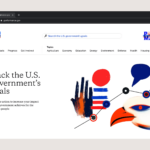In today’s tech-driven world, user experience is more important than ever.
From the simplest consumer app to the most complex industrial software, how we interact with digital products can dramatically impact our lives and businesses.
For most people, a bad user experience means only a bit of anger, frustration, or a waste of time. Unfortunately, poorly designed products can cause significant harm or, in extreme cases, potentially impact human life.
History reveals numerous instances where poor user experience led to great failures.
On January 8, 1989, a Boeing 737 crashed into the side of the M1 motorway in England. The incident resulted in 47 fatalities and 74 injuries. The primary cause of the crash was a poorly designed interface. The crew’s mistaken shutdown of the operating engine was caused by an unclear indication of which engine was malfunctioning. (source)
On March 23, 2005, a catastrophic explosion occurred at the BP refinery in Texas City. The incident claimed the lives of 15 workers, injured 180 others, and inflicted billions of dollars in economic losses. The investigation revealed that the control room’s HMI failed to follow basic usability principles, leading to misinterpretations of feedback. (source)
On January 13, 2018, an emergency missile alert accidentally went out to everyone in Hawaii. An officer in the emergency operation center mistakenly selected an incorrect “template”. (source)
While the previous examples highlight huge failures, poorly designed products cause daily problems.
The root cause of all user failures lies in the neglect of fundamental design principles.
As highlighted by Jonathan Shariat & Cynthia Savard Saucier in the book Tragic Design: The Impact of Bad Product Design and How to Fix, it is urgent to consider the human impact of design work and understand the potential consequences of design decisions.
Thankfully, companies began hiring UX designers to apply principles and methodologies that lead to better products. However, some enterprises soon started misusing design principles, using them to manipulate users’ behavior rather than improving their experiences.
Back in 2012, Joe Kraus, a partner at Google Ventures, gave a talk titled “The Culture of Distraction,” which discussed the increasing demands on our attention in today’s digital age.
Kraus said: “We are creating and encouraging a culture of distraction where we are increasingly disconnected from the people and events around us and increasingly unable to engage in long-form thinking. People now feel anxious when their brains are unstimulated.”
Discussions about the relationship between technology and human behavior continued at Google until Tristan Harris, a former Google product manager, presented an internal document titled “A Call to Minimize Distraction & Respect Users’ Attention.” Harris highlighted the psychological vulnerabilities that technology companies exploit to keep users engaged. The author argued that tech companies should design products to minimize these distractions and respect users’ attention
After more than 10 years, our attention is still under attack.
Modern mobile operating systems prioritize multitasking with features like picture-in-picture and split-screen, enabling users to resize windows and interact with multiple applications simultaneously. However, this convenience can come at a cost to user attention. Juggling multiple tasks, especially complex or demanding ones, can lead to cognitive overload and diminished focus.
In many cases, especially in the marketing departments, UX designers are hired to maximize user engagement rather than enhance product features.
Research from Stanford University reported that the average human attention span has significantly decreased over the past two decades, from about 2.5 minutes in 2004 to just 47 seconds in 2023, a staggering 66% drop.
Johan Hari, author of Stolen Focus: Why You Can’t Pay Attention and How to Think Deeply Again, describes how technology accelerates every aspect of our lives. Yet, while everything around us speeds up, our ability to focus is slowing down.
Constantly switching between tasks creates a heavy cognitive load, forcing us to continuously filter out irrelevant information and diminishing our capacity to concentrate.
This constant reconfiguration strains both our work and personal lives.
The growing prevalence of distractions has been further exacerbated by companies that use design to manipulate behavior.
Don Norman, author of Design for a Better World, argues that human behavior is the primary driver of change and that design must focus on influencing behavior to create a better world.
He is highly critical of any form of behavior manipulation. As he states in the book: “The ability of marketing to use its superior understanding of human behavior to manipulate people should be considered immoral and unethical, but in today’s world of commerce, it is applauded.”
Robinhood, an American financial services company, provided a clear example of behavioral manipulation. The app faced criticism for its gamified interface, which employed tactics like daily push notifications and celebratory “confetti” animations to encourage user engagement. These features were seen as manipulative rather than supportive of informed investment decisions. As a result, the app underwent a redesign to focus on providing a more straightforward and unbiased investing experience.
Thankfully, numerous solutions exist to enhance user experience and boost attention levels without manipulating people.
HUDWAY, a California-based company, is dedicated to enhancing road safety by keeping drivers focused on the road while delivering essential information. They have developed a range of innovative and accessible head-up displays compatible with various vehicles, helping to reduce the risk of accidents.
Tesla designed a system called Forward Collision Warning (FCW) to alert drivers of potential collisions with vehicles or other obstacles. The system provides both visual and audible warnings to alert the driver.
Solomon Technology Corporation, a pioneer in 3D vision systems, utilized augmented reality to facilitate real-time recognition and verification of assembled components. This innovative system aids operators in maintaining focus and mitigating mental strain.
These examples demonstrate effective applications of UX design in critical environments, highlighting how thoughtful design can enhance attention and improve outcomes.
In the near future, we can expect a dramatic increase in the use of technology in critical areas such as medical devices, safety equipment, manufacturing machinery, and military applications. The way design manages attention and focus will become more critical than ever. The future of design lies in moving beyond consumer platforms and into the realm of high-risk fields where user experience can make a real difference.
We are at the dawn of a new era where technology will be more powerful and more integrated into our lives. I hope that more designers will transition from advertising and other low-risk consumer industries to critical contexts such as healthcare, safety, and manufacturing. These fields will present significant challenges that require a deep understanding of human behavior and strong ethical decision-making.
As technology continues to evolve, it’s essential to prioritize attention and well-being in design, ensuring that our devices and services support our goals and values rather than manipulating our behavior for the sake of engagement.
- Hari, J. (2022). Stolen Focus: Why You Can’t Pay Attention. United Kingdom: Bloomsbury Publishing.
- Harris, T. (2013). A Call to Minimize Distraction & Respect Users’ Attention. http://minimizedistraction.com/
- Kraus, J. 2012. We’re creating a culture of distraction (https://wildfoxden.com/wp-content/uploads/2021/07/were_creating_a_culture_of_distraction.pdf)
- Mark, G. (2023). Attention Span: A Groundbreaking Way to Restore Balance, Happiness and Productivity. United States: Hanover Square Press.
- Shariat, J., Saucier, C. S. (2017). Tragic Design: The Impact of Bad Product Design and How to Fix It. United States: O’Reilly Media.
- Norman, D. A. (2024). Design for a Better World: Meaningful, Sustainable, Humanity Centered. United States: MIT Press.


